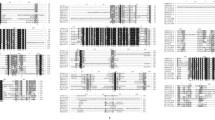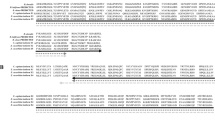Abstract
The insect integument, which consists mainly of chitin microfibrils and cuticular proteins, is an extracellular matrix that covers the entire external and some internal surfaces of the insect body and serves as a primary barrier against several environmental stresses. Using RNAi-mediated gene knockdown procedure, we performed functional analyses of three adult-specific cuticular protein genes, CPR4, CPR18, and CPR27, regarding their involvement in repelling chemical insecticides in the red flour beetles, Tribolium castaneum (Herbst) (Coleoptera: Tenebrionidae). The depletion of these CPRs produced adult phenotypes with malformed (wrinkled/dimpled) elytra as well as thinner and disorganized cuticle of abdominal sternite. After knocking down the CPR genes, the beetles were exposed to six types of neonicotinoid-class insecticides, and the short-term neurotoxic effects were evaluated. The knockdown of any of CPR genes, either singly or in combination, increased the beetles’ susceptibility to neonicotinoids compared to negative control beetles. The results suggested that CPR4, CPR18, and CPR27 have an indispensable role in organizing the insect integument structure that can regulate the penetration rate of xenobiotics such as neonicotinoid insecticides, presumably by hel** built proper structural features of cuticular layer.








Similar content being viewed by others
Data availability
The data that support the findings of this study are available from the corresponding author upon reasonable request.
Abbreviations
- RNAi:
-
RNA interference
- CPR:
-
Cuticular protein
- qRT-PCR:
-
Quantitative reverse transcription PCR
- RPL32:
-
Ribosomal protein L32
- dsRNA:
-
Double-stranded RNA
- malE:
-
Maltose binding protein E
- PCs:
-
Pore canals
- PCFs:
-
Pore canal fibers
References
Andersen SO (1998) Amino acid sequence studies on endocuticular proteins from the desert locust Schistocerca gregaria. Insect Biochem Mol Biol 28(5–6):421–434. https://doi.org/10.1016/S0965-1748(98)00028-9
Andersen SO (2000) Studies on proteins in post-ecdysial nymphal cuticle of locust, Locusta migratoria, and cockroach Blaberus craniifer. Insect Biochem Mol Biol 30(7):569–577. https://doi.org/10.1016/S0965-1748(00)00029-1
Andersen SO (2009) Cuticle. In: Resh VH, Cardé RT (eds) Encyclopedia of Insects, 2nd edn. Academic Press, pp 245–246. https://doi.org/10.1016/B978-0-12-374144-8.00073-4
Balabanidou V, Grigoraki L, Vontas J (2018) Insect cuticle: a critical determinant of insecticide resistance. Curr Opin Insect Sci 27:68–74. https://doi.org/10.1016/j.cois.2018.03.001
Brown SJ, Shippy TD, Miller S, Bolognesi R, Beeman RW, Lorenzen MD, Bucher G, Wimmer EA, Klingler M (2009) The red flour beetle, Tribolium castaneum (Coleoptera): a model for studies of development and pest biology. Cold Spring Harb Protoc. https://doi.org/10.1101/pdb.emo126
Corbel V, N'Guessan R (2013) Distribution, mechanisms, impact and management of insecticide resistance in malaria vectors: a pragmatic review, pp 583–588. https://doi.org/10.5772/56117
Dent D (2000) Insect pest management, 2nd edn. CABI, pp 81–83
Goulson D, Nicholls E, Botías C, Rotheray EL (2015) Bee declines driven by combined stress from parasites, pesticides and lack of flowers. Science 347(6229):1255957. https://doi.org/10.1126/science.1255957
Gullan PJ, Cranston PS (2010) The insects: an outline of entomology, 4th edn. Wiley, pp 24–26
Harðardóttir HM, Male R, Nilsen F, Eichner C, Dondrup M, Dalvin S (2019) Chitin synthesis and degradation in Lepeophtheirus salmonis: Molecular characterization and gene expression profile during synthesis of a new exoskeleton. Comp Biochem Physiol A Mol Integr Physiol 227:123–133. https://doi.org/10.1016/j.cbpa.2018.10.008
Hayakawa Y, Kato D, Kamiya K, Minakuchi C, Miura K (2017) Chitin synthase 1 gene is crucial to antifungal host defense of the model beetle, Tribolium castaneum. J Invertebr Pathol 143:26–34. https://doi.org/10.1016/j.jip.2016.11.009
Hayakawa Y, Sawada M, Seki M, Sirasoonthorn P, Shiga S, Kamiya K, Minakuchi C, Miura K (2018) Involvement of laccase2 and yellow-e genes in antifungal host defense of the model beetle, Tribolium castaneum. J Invertebr Pathol 151:41–49. https://doi.org/10.1016/j.jip.2017.10.010
IRAC (2023) Irac mode of action classification scheme, version 10.5. Insecticide Resistance Action Committee. https://www.irac-online.org/mode-of-action/. Accessed 6 Apr 2023
Koyama H, Kato D, Minakuchi C, Tanaka T, Yokoi K, Miura K (2015) Peptidoglycan recognition protein genes and their roles in the innate immune pathways of the red flour beetle, Tribolium castaneum. J Invertebr Pathol 132:86–100. https://doi.org/10.1016/j.jip.2015.09.003
Liu X, Cooper AM, Yu Z, Silver K, Zhang J, Zhu KY (2019) Progress and prospects of arthropod chitin pathways and structures as targets for pest management. Pestic Biochem Physiol 161:33–46. https://doi.org/10.1016/j.pestbp.2019.08.002
Mallet J (1989) The evolution of insecticide resistance: have the insects won? Trends Ecol Evol 4(11):336–340. https://doi.org/10.1016/0169-5347(89)90088-8
Martínez JP, Falomir MP, Gozalbo D (2009) Chitin: a structural biopolysaccharide. eLS. https://doi.org/10.1002/9780470015902.a0000694.pub2
Matsuda K, Buckingham SD, Kleier D, Rauh JJ, Grauso M, Sattelle DB (2001) Neonicotinoids: Insecticides acting on insect nicotinic acetylcholine receptors. Trends Pharmacol Sci 22(11):573–580. https://doi.org/10.1016/S0165-6147(00)01820-4
Merzendorfer H, Zimoch L (2003) Chitin metabolism in insects: Structure, function and regulation of chitin synthases and chitinases. J Exp Biol 206(24):4393–4412. https://doi.org/10.1242/jeb.00709
Morrissey CA, Mineau P, Devries JH, Sanchez-Bayo F, Liess M, Cavallaro MC, Liber K (2015) Neonicotinoid contamination of global surface waters and associated risk to aquatic invertebrates: a review. Environ Int 74:291–303. https://doi.org/10.1016/j.envint.2014.10.024
Moussian B (2010) Recent advances in understanding mechanisms of insect cuticle differentiation. Insect Biochem Mol Biol. https://doi.org/10.1016/j.ibmb.2010.03.003
Noh MY, Kramer KJ, Muthukrishnan S, Kanost MR, Beeman RW, Arakane Y (2014) Two major cuticular proteins are required for assembly of horizontal laminae and vertical pore canals in rigid cuticle of Tribolium castaneum. Insect Biochem Mol Biol 53:363–375. https://doi.org/10.1016/j.ibmb.2014.07.005
Noh MY, Muthukrishnan S, Kramer KJ, Arakane Y (2015) Tribolium castaneum RR-1 cuticular protein TcCPR4 is required for formation of pore canals in rigid cuticle. PLoS Genet 11(2):e1004963. https://doi.org/10.1371/journal.pgen.1004963
Noh MY, Muthukrishnan S, Kramer KJ, Arakane Y (2016) Cuticle formation and pigmentation in beetles. Curr Opin Insect Sci 17:1–9. https://doi.org/10.1016/j.cois.2016.05.004
Plapp FW (1976) Biochemical genetics of insecticide resistance. Ann Rev Entomol 21(1):179–197. https://doi.org/10.1146/annurev.en.21.010176.001143
PPDB (2023) Pesticide properties database. Agriculture and Environment Research Unit, University of Hertfordshire, United Kingdom. http://sitem.herts.ac.uk/aeru/ppdb/en/purchase_database.htm. Accessed 7 May 2023
Sano Y (1965) Histological techniques. Nanzando Company, Tokyo
Sirasoonthorn P, Kamiya K, Miura K (2021) Antifungal roles of adult-specific cuticular protein genes of the red flour beetle Tribolium castaneum. J Invertebr Pathol 186:107674. https://doi.org/10.1016/j.jip.2021.107674
Tang B, Chen X, Liu Y, Tian H, Liu J, Hu J, Xu W, Zhang W (2008) Characterization and expression patterns of a membrane-bound trehalase from Spodoptera exigua. BMC Mol Biol 9(1):51. https://doi.org/10.1186/1471-2199-9-51
Thompson DA, Lehmler H-J, Kolpin DW, Hladik ML, Vargo JD, Schilling KE, LeFevre GH, Peeples TL, Poch MC, LaDuca LE (2020) A critical review on the potential impacts of neonicotinoid insecticide use: Current knowledge of environmental fate, toxicity, and implications for human health. Environ Sci Process Impacts 22(6):1315–1346. https://doi.org/10.1039/C9EM00586B
Tomizawa M, Latli B, Casida JE (1996) Novel neonicotinoid-agarose affinity column for drosophila and musca nicotinic acetylcholine receptors. J Neurochem 67(4):1669–1676. https://doi.org/10.1046/j.1471-4159.1996.67041669.x
Yokoi K, Koyama H, Ito W, Minakuchi C, Tanaka T, Miura K (2012a) Involvement of NF-κB transcription factors in antimicrobial peptide gene induction in the red flour beetle Tribolium castaneum. Dev CompImmunol 38(2):342–351. https://doi.org/10.1016/j.dci.2012.06.008
Yokoi K, Koyama H, Minakuchi C, Tanaka T, Miura K (2012b) Antimicrobial peptide gene induction, involvement of toll and imd pathways and defense against bacteria in the red flour beetle, Tribolium castaneum. Results Immunol 2:72–82. https://doi.org/10.1016/j.rinim.2012.03.002
Yu HZ, Li NY, **e YX, Zhang Q, Wang Y, Lu ZJ (2020) Identification and functional analysis of two chitin synthase genes in the common cutworm Spodoptera litura. InSects 11(4):253. https://doi.org/10.3390/insects11040253
Zhu KY, Merzendorfer H, Zhang W, Zhang J, Muthukrishnan S (2016) Biosynthesis, turnover, and functions of chitin in insects. Annu Rev Entomol 61:177–196. https://doi.org/10.1146/annurev-ento-010715-023933
Zuber R, Norum M, Wang Y, Oehl K, Gehring N, Accardi D, Bartozsewski S, Berger J, Flötenmeyer M, Moussian B (2018) The ABC transporter Snu and the extracellular protein Snsl cooperate in the formation of the lipid-based inward and outward barrier in the skin of Drosophila. Eur J Cell Biol 97(2):90–101. https://doi.org/10.1016/j.ejcb.2017.12.003
Acknowledgements
We thank Dr. H. Takahashi, Prof. M. Nakazono, Dr. T. Oi, and Ms. S. Um (Nagoya University) for technical assistance with cross-sectioning and microscopic observation, and Dr. A. Miyanoshita (National Agriculture and Food Research Organization, Japan) for providing T. castaneum. This work was supported in part by JSPS KAKENHI Grant Number 20K06050 to KM. PO and PS were supported by a scholarship from Ministry of Education, Culture, Sports, Science and Technology (MEXT), Japan.
Author information
Authors and Affiliations
Corresponding author
Additional information
Publisher's Note
Springer Nature remains neutral with regard to jurisdictional claims in published maps and institutional affiliations.
Supplementary Information
Below is the link to the electronic supplementary material.
Rights and permissions
Springer Nature or its licensor (e.g. a society or other partner) holds exclusive rights to this article under a publishing agreement with the author(s) or other rightsholder(s); author self-archiving of the accepted manuscript version of this article is solely governed by the terms of such publishing agreement and applicable law.
About this article
Cite this article
Ongsirimongkol, P., Sirasoonthorn, P., Kamiya, K. et al. Cuticular protein genes are involved with insecticide resistance mechanism in red flour beetles, Tribolium castaneum (Coleoptera: Tenebrionidae). Appl Entomol Zool 58, 357–368 (2023). https://doi.org/10.1007/s13355-023-00841-w
Received:
Accepted:
Published:
Issue Date:
DOI: https://doi.org/10.1007/s13355-023-00841-w




